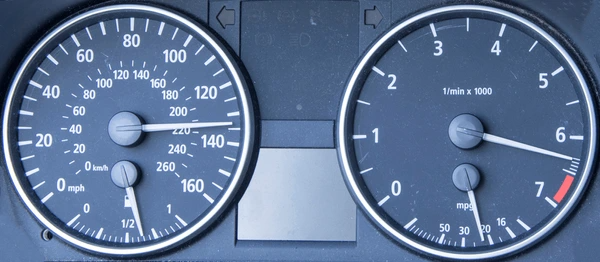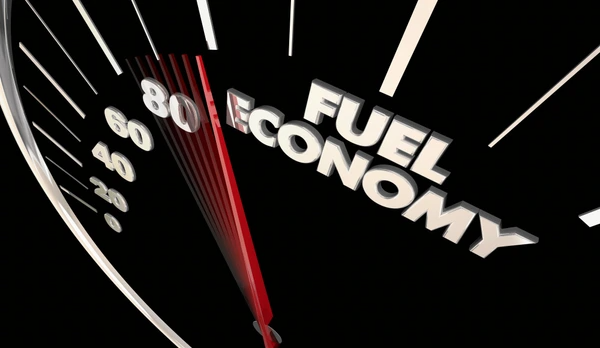
Definition of MPG (Miles Per Gallon)
What Is MPG Meaning? MPG, or Miles Per Gallon, is a measure of fuel efficiency for vehicles, representing the distance a vehicle can travel on one gallon of fuel. It is calculated by dividing the distance traveled in miles by the amount of fuel consumed in gallons. The higher the MPG value, the more fuel-efficient the vehicle is.

Importance of MPG
MPG is a crucial metric for several reasons:
- Environmental impact: Higher MPG vehicles produce lower greenhouse gas emissions and contribute less to air pollution.
- Cost savings: Improved fuel efficiency translates to lower fuel costs for consumers and businesses.
- Regulatory compliance: Many countries have implemented fuel economy standards and regulations, making MPG an essential consideration for automakers.
How MPG is Calculated
MPG is calculated by dividing the total distance traveled by the amount of fuel consumed during that distance. The formula for calculating MPG is:
MPG = Total Miles Traveled / Total Gallons of Fuel Consumed
For example, if a vehicle travels 300 miles and consumes 10 gallons of fuel, its MPG would be:
MPG = 300 miles / 10 gallons = 30 MPG
Types of MPG Ratings
City MPG Rating
The city MPG rating represents the estimated fuel efficiency of a vehicle during city driving conditions, which involve frequent stops, idling, and lower speeds. This rating is crucial for urban commuters and those who primarily drive in congested areas. A higher city MPG rating translates to lower fuel consumption and costs for city driving.
Highway MPG Rating
The highway MPG rating estimates a vehicle’s fuel efficiency during highway driving conditions, characterized by higher sustained speeds and fewer stops. This rating is particularly important for long-distance travelers and those who frequently drive on highways or open roads. A higher highway MPG rating can result in significant fuel savings over extended highway journeys.
Combined MPG Rating
The combined MPG rating is a weighted average of the city and highway MPG ratings, providing an overall estimate of a vehicle’s fuel efficiency across various driving conditions. This rating is useful for evaluating a vehicle’s general fuel economy and making comparisons between different models. It offers a more comprehensive representation of real-world driving scenarios.

Factors That Influence MPG
Several factors can influence a vehicle’s MPG, including:
- Vehicle weight and aerodynamics: Heavier vehicles with poor aerodynamics tend to have lower MPG due to increased rolling resistance and drag.
- Engine size and efficiency: Larger, less efficient engines generally consume more fuel, resulting in lower MPG.
- Driving conditions: Aggressive driving, frequent acceleration/deceleration, and high speeds can significantly reduce MPG.
- Vehicle maintenance: Proper maintenance, such as regular oil changes, tire inflation, and engine tuning, can help maintain optimal fuel efficiency.
Improving Your Vehicle’s MPG
Several strategies can be employed to improve a vehicle’s MPG:
- Proper vehicle maintenance (e.g., regular tune-ups, tire inflation, oil changes)
- Adopting fuel-efficient driving habits (e.g., gradual acceleration, maintaining consistent speeds, reducing idling)
- Reducing unnecessary weight in the vehicle
- Using advanced technologies like hybrid or electric powertrains
- Choosing vehicles with smaller, more efficient engines
- Considering aerodynamic modifications for improved air flow
Government MPG Standards and Testing
Corporate Average Fuel Economy (CAFE) Standards
The CAFE standards set minimum fuel economy requirements for automakers’ fleets of passenger cars and light trucks. These standards are regularly updated and have become more stringent over time to promote energy conservation and reduce greenhouse gas emissions.
EPA Fuel Economy Testing
The Environmental Protection Agency (EPA) conducts standardized laboratory tests to measure a vehicle’s fuel economy under controlled conditions. This includes city and highway driving cycles to determine the official MPG ratings displayed on new vehicle window stickers.
On-Road Fuel Economy Testing
In addition to laboratory tests, the EPA conducts on-road testing using portable emission measurement systems to evaluate real-world fuel economy. This helps ensure that the official MPG ratings are representative of actual driving conditions.
Compliance and Enforcement
Automakers must comply with CAFE standards and report their fleet’s fuel economy to the government annually. Failure to meet the standards can result in substantial fines. The EPA also conducts audits and investigations to ensure the accuracy of reported fuel economy data.

Applications of MPG
Vehicle Design and Development
MPG plays a crucial role in the design and development of fuel-efficient vehicles. Automotive engineers and manufacturers strive to improve MPG by optimizing various factors, such as engine efficiency, aerodynamics, and weight reduction. Higher MPG ratings are often a key selling point for consumers seeking cost savings and environmental benefits.
Fuel Economy Regulations
Governments and regulatory bodies impose fuel economy standards based on MPG targets. These regulations aim to reduce greenhouse gas emissions and promote the development of more efficient vehicles. Automakers must meet these MPG requirements across their vehicle lineups to comply with environmental regulations.
Consumer Information and Comparison
MPG ratings are prominently displayed on vehicle window stickers and in marketing materials, allowing consumers to compare the fuel efficiency of different models. This information aids in making informed purchasing decisions based on factors such as fuel costs and environmental impact.
Fleet Management
Organizations with large vehicle fleets, such as delivery companies or government agencies, closely monitor MPG to optimize fuel consumption and reduce operational costs. Higher MPG vehicles can result in significant cost savings over the lifetime of the fleet.
Application Cases
| Product/Project | Technical Outcomes | Application Scenarios |
|---|---|---|
| Chevrolet Volt | Enhanced fuel efficiency with an MPG rating of 42, utilizing a combination of electric and gasoline power. | Ideal for consumers seeking cost savings and environmental benefits in urban and suburban driving conditions. |
| Toyota Prius | Achieves high MPG ratings of up to 56, leveraging hybrid technology to optimize fuel consumption. | Suitable for eco-conscious drivers and those looking to reduce fuel expenses in daily commutes. |
| Ford Fusion Hybrid | Offers an MPG rating of 43, integrating advanced aerodynamics and lightweight materials. | Perfect for drivers who prioritize fuel economy and reduced emissions in both city and highway driving. |
| Honda Accord Hybrid | Delivers an MPG rating of 48, combining a fuel-efficient engine with regenerative braking technology. | Best for individuals seeking a balance of performance and fuel efficiency in diverse driving scenarios. |
| Hyundai Ioniq | Provides an impressive MPG rating of 58, utilizing a highly efficient hybrid powertrain. | Optimal for drivers focused on maximizing fuel efficiency and minimizing environmental impact in various driving conditions. |
Latest Technical Innovations in MPG
Aerodynamic Improvements
Optimizing vehicle aerodynamics through design modifications like streamlined body shapes, underbody panels, and active grille shutters can significantly reduce drag and improve fuel efficiency. 1 These aerodynamic enhancements allow vehicles to cut through air more efficiently, reducing the energy required for propulsion.
Lightweight Materials
Incorporating lightweight yet strong materials like aluminum, carbon fiber, and advanced high-strength steels in vehicle construction can lead to substantial weight reduction. Lighter vehicles require less energy to accelerate and maintain speed, thereby enhancing fuel efficiency.
Advanced Transmissions
Continuously Variable Transmissions (CVTs) and advanced multi-speed automatic transmissions can optimize engine operating conditions, minimizing fuel consumption by keeping the engine within its most efficient rpm range.
Engine Technologies
Innovations like gasoline direct injection (GDI), variable valve timing, cylinder deactivation, and turbocharging allow smaller, more efficient engines to deliver comparable performance to larger engines while consuming less fuel. Additionally, hybrid and electric powertrains significantly improve fuel efficiency by utilizing electric motors and regenerative braking.
Fuel-Saving Driving Techniques
Adopting eco-driving habits like gradual acceleration, maintaining consistent speeds, anticipating traffic flow, and minimizing idling can contribute to improved fuel efficiency without requiring vehicle modifications. Educating drivers on these techniques can lead to substantial fuel savings.
Alternative Fuels
Exploring alternative fuels like biofuels, hydrogen, and compressed natural gas (CNG) can reduce reliance on conventional gasoline and diesel, potentially offering improved fuel efficiency and lower emissions. Ongoing research aims to enhance the viability and adoption of these alternative fuel sources.
To get detailed scientific explanations of MPG meaning, try Patsnap Eureka.

Learn more
2024 Toyota Hilux Review: Everything You Need to Know
The LS3 Engine: Unleashing Power and Efficiency in Automobile
V12 Engine: Unleashing Ultimate Power, Performance, and Luxury
